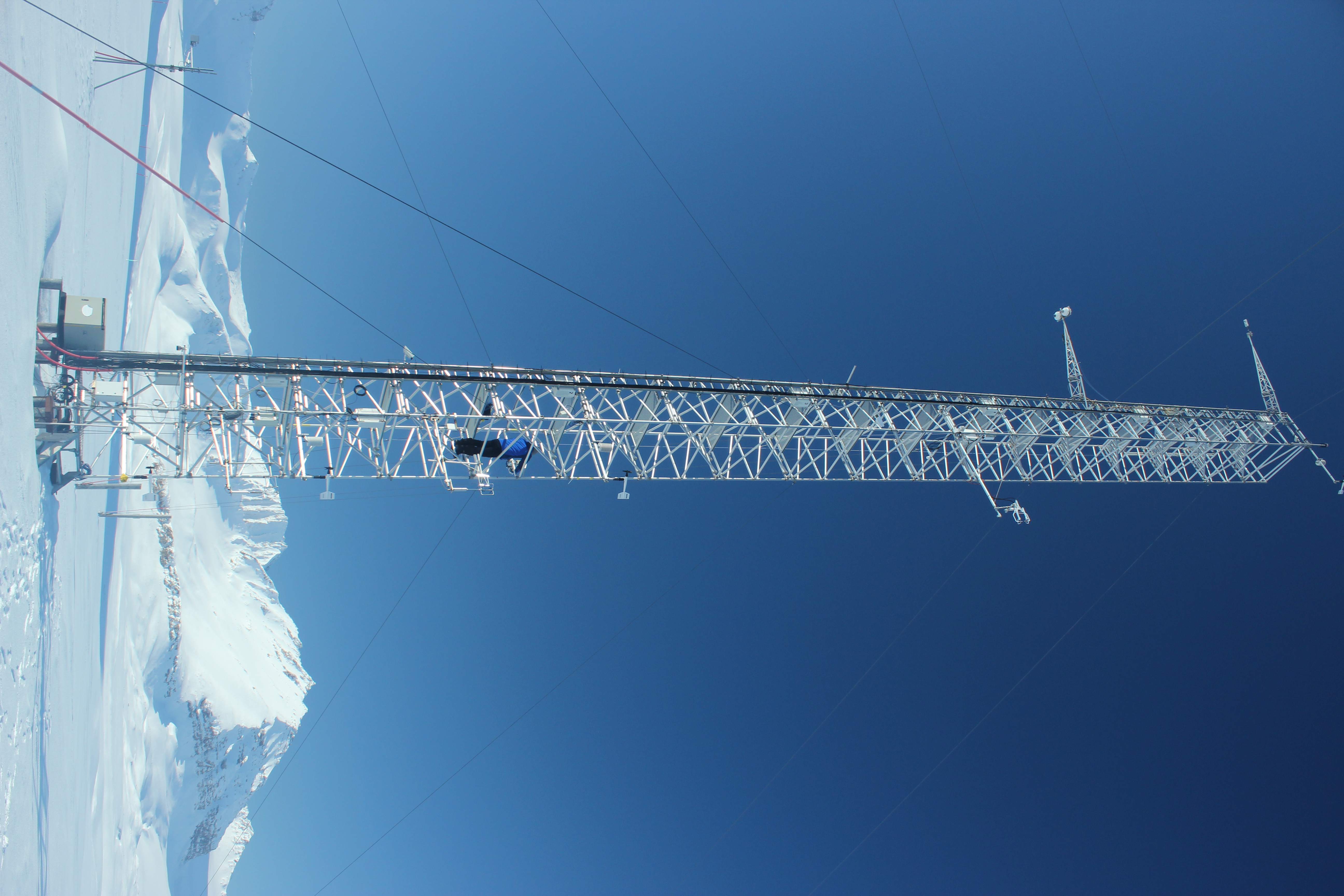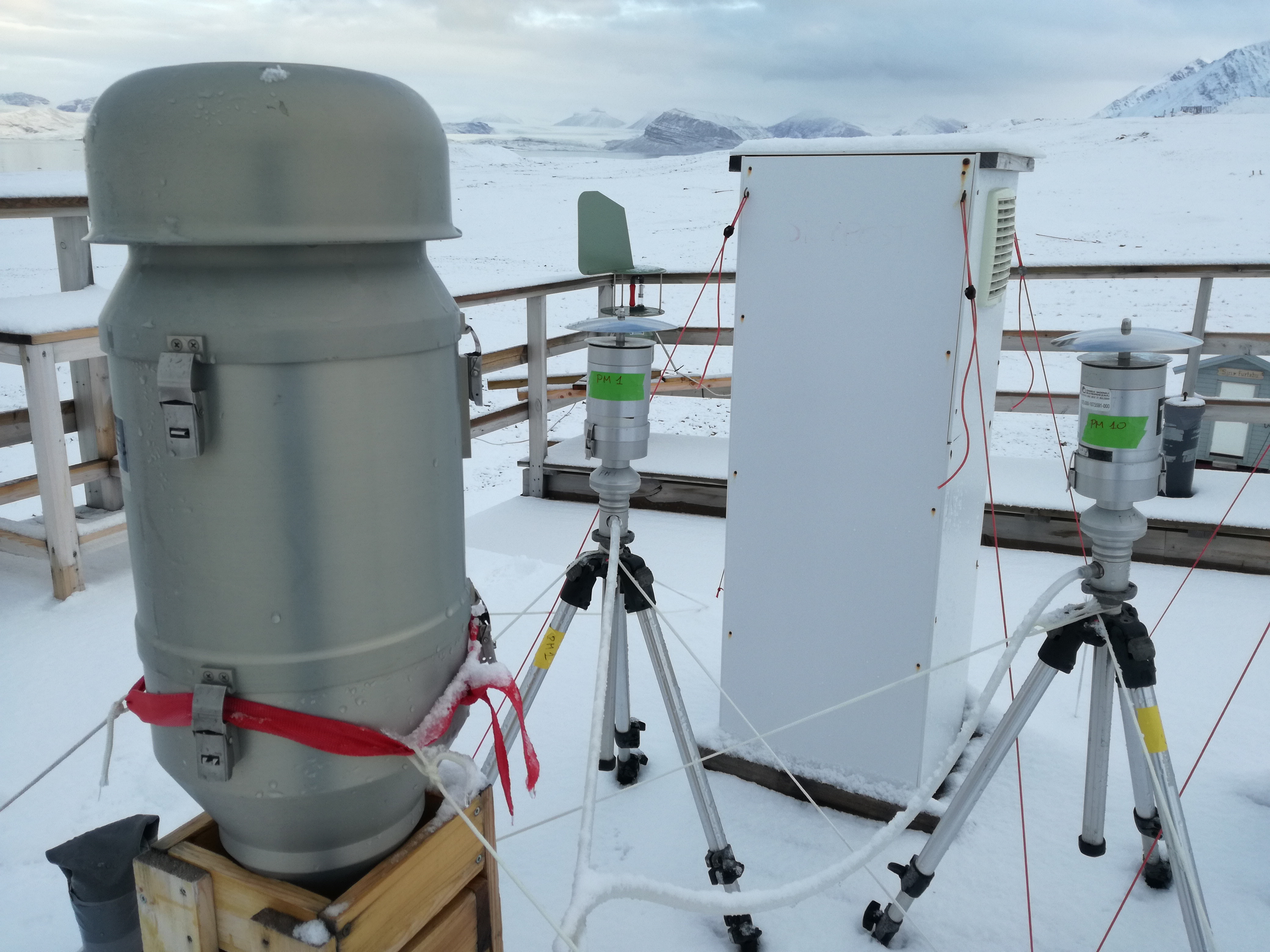CNR
Type of resources
Available actions
IADC Research Activities
Topics
Keywords
Contact for the resource
Provided by
Years
Formats
Representation types
Update frequencies
status
Scale
-

Snow and surface characteristics are monitored by CNR at the Climate Change Tower in Ny-Alesund. Partly funded by Arctic PASSION project (agreement number 101003472).
-

Ice Nuclei Particle Concentration (INP) Ice nucleating particle (INPs) concentration obtained in spring and summer campaigns in the Arctic Region. Sampling lines allow the aerosol particles collection onto the filters and the sampling line for the continuos measurements of size distribution with the OPC and SMPS. The aim is to improve our understanding of aerosol-cloud-climate interactions and representation of climate models.
-

Aerosol sampling by a High-Volume Sampler (TECORA eco-highvol equipped with digital PM1 sampling inlet, nominal flow 500 lpm) for the collection of ambient aerosol particles with aerodynamic diameter < 1 μm (PM1) on pre-washed and pre-baked quartz-fiber filters (PALL, Ø= 18cm). Sampling time: 3-4 days per sample. A multi-technique analytical approach for the characterization of the sampled organic aerosol: Organic matter (OM) and Organic Nitrogen (ON). Analytical techniques employed are based on nuclear magnetic resonance spectroscopy (NMR) and Aerosol Mass Spectrometry (HR-TOF-AMS applied off-line) for the OM characterization, C and N elemental analysis (CN-EA) and ion chromatography (IC) for inorganic ions and alkyl-amines. -NMR functional groups (Aromatics, anomeric/vynilic, H-C-O, H-C-C=, H.C) -NMR tracers: Levoglucosan, Methane-sulphonic acid (MSA), Hydroxymethane-sulphonic acid (HMSA), Amines (mono-, di- and tri-methyl amines, etc.) -HR-TOF-AMS (off-line): main species (Org, SO4, NO3, NH4, Chl), elemental ratios (OM:OC, O:C, H:C) & tracer fragments (m/z43, 44, 60 etc.) -NMR & AMS OA source apportionment
-

Measurements are obtained using a Pyrgeometer Kipp&Zonen, model CGR4, installed at Thule Air Base (220 m a.s.l.) in May 2013. The instrument sensitivity was determined during factory calibration for temperatures down to -40 °C, thus specifically suited for the polar environment. Data are acquired by a datalogger at 30 s time intervals and then transferred to a PC. The CGR4 and its dedicated PC are maintained by Daniela Meloni at ENEA.
-

Chronobiology of polar organisms (Chronopolar) Monitoring water parameters in surface and deep (3.0 meters) using DS18B20 + rasberry-pi. Sample collection: Lepidurus arcticus.
-

Aerosol Flux in Arctic (ALFA) Evaluate aerosol dry deposition/emission in the Arctic on icy/snowy surface and its dependence on particle size and micrometeorological parameters. The measures of the particles exchange rate will be carried out with the technique of eddy-correlation at Ny Alesund in size-segregated mode (2-3000 nm) coupling a sonic anemometer, a CPC and an optical particle counter (OPC) that are able to detect fluctuations of the particles concentration at high frequency (1Hz).
-

Climate-Cryosphere-Carbon interactions in Kongsfjorden, Svalbard (C3) Use sediment cores as archives of climate-induced destabilizations in the fjord. By targeting well known past climate changes (MWP and LIA) we will understand how the C3 system varied during natural warming and cooling events. Retrieve of two sediment cores in Kongsfjorden, in summer 2017, to encompass the last 1k years.
-

pH tipping point in Svalbard (pHinS) The project is focused on carbonate chemistry in the fjord and measure how meltwater, icebergs and freshwater runoff affects the acidity of coastal seawater. Acquisition of CTD profiles and seawater samples at discrete depths (surface, bottom and 1-3 intermediate depths) to determine pH, total alkalinity, dissolved inorganic carbon, dissolved oxygen, nutrients, dissolved organic carbon. Collection of samples from icebergs and streams to determine the same set of parameters measured in the seawater. Some of the analysis were performed in the laboratory of the “Dirigibile Italia” Arctic station soon after the collection; others will be performed on preserved samples in ISMAR’s laboratories. 62 water column profiles of pressure, Temperature, salinity, dissolved oxygen, turbidity instrument: SBE19plus
-

This proposal will focus, by means of a multidisciplinary and well-balanced consortium on eutrophication, contaminants, marine litter and underwater noise descriptors of the MSFD. vertical acquisition in 18 CTD station in Kongsfjorden with water sampling at 2-3 depths (surface, intermediate, bottom)for nutrient and pH analyses of sampled water in the lab. parameters: Pressure, Strain Gauge [db]rnTemperature [IPTS-68, deg C]rnConductivity [mS/cm]rnpHrnOxygen, SBE 43 [ml/l]rnTurbidity, Turner Cyclops [NTU] Pressure, Strain Gauge [db]rnTemperature [IPTS-68, deg C]rnConductivity [mS/cm]rnpHrnOxygen, SBE 43 [ml/l]rnTurbidity, Turner Cyclops [NTU]
-

Atmospheric Gondola for Aerosol Profiles (AGAP) The scientific goals of AGAP are to develop novel aerosol payloads and evaluate the vertical distribution of aerosol properties in the Arctic Boundary Layer. Dataset consists in Aerosol vertical profiles gridded at a 50 m spatial resolution: R, T, P, RH, Aerosol size distribution, BC concentration, O3. Maximum altitudes 1500 m.